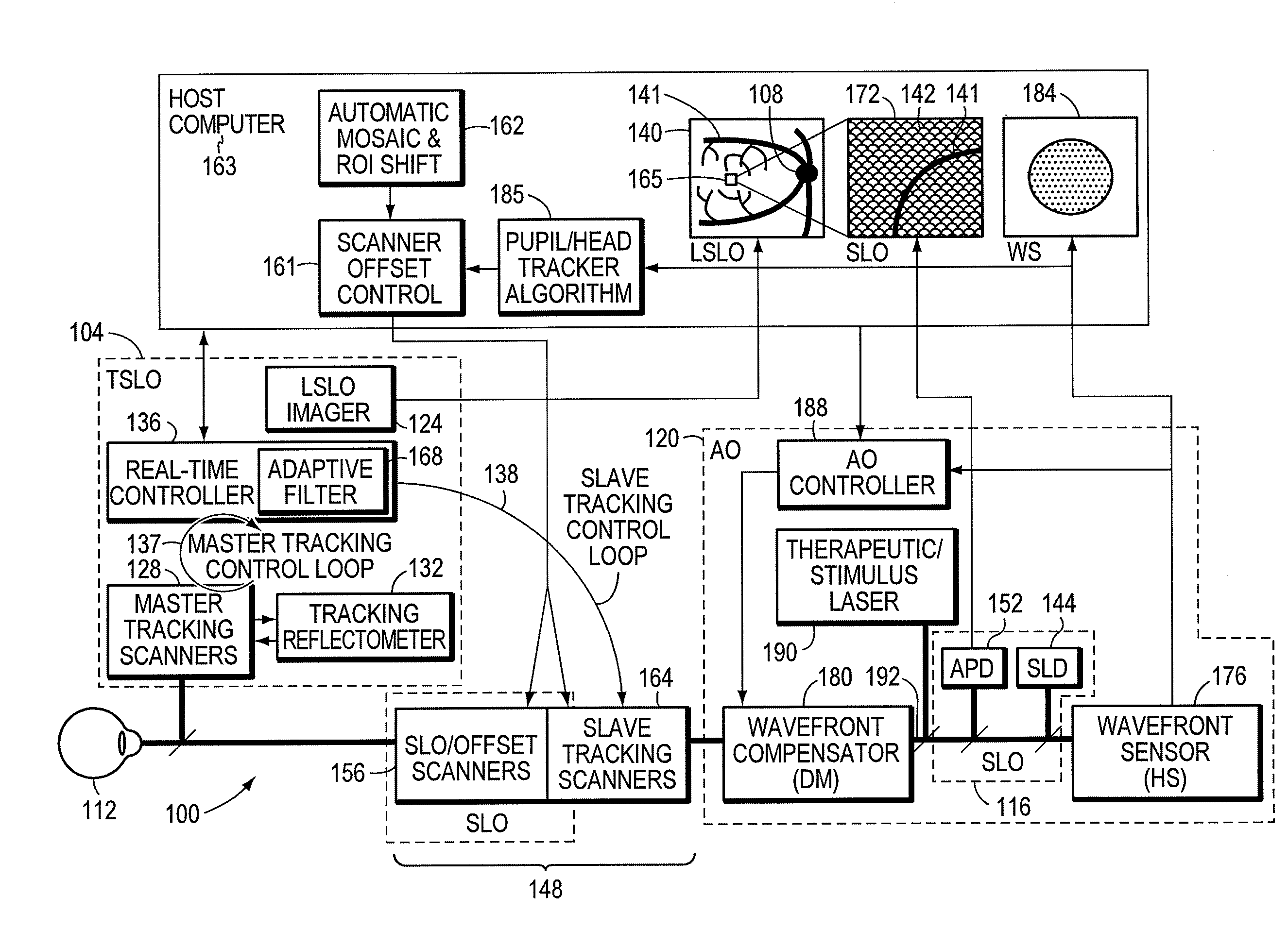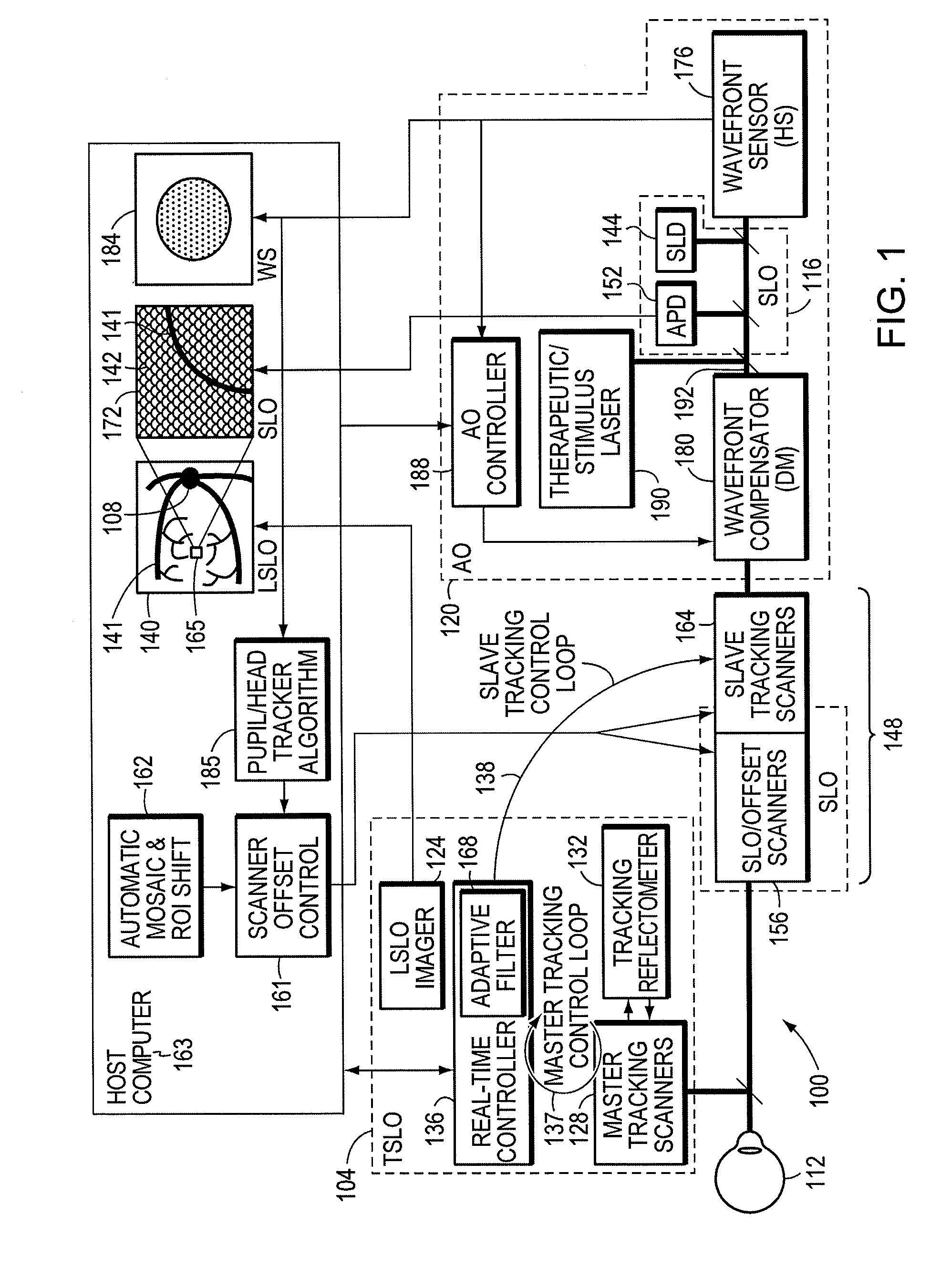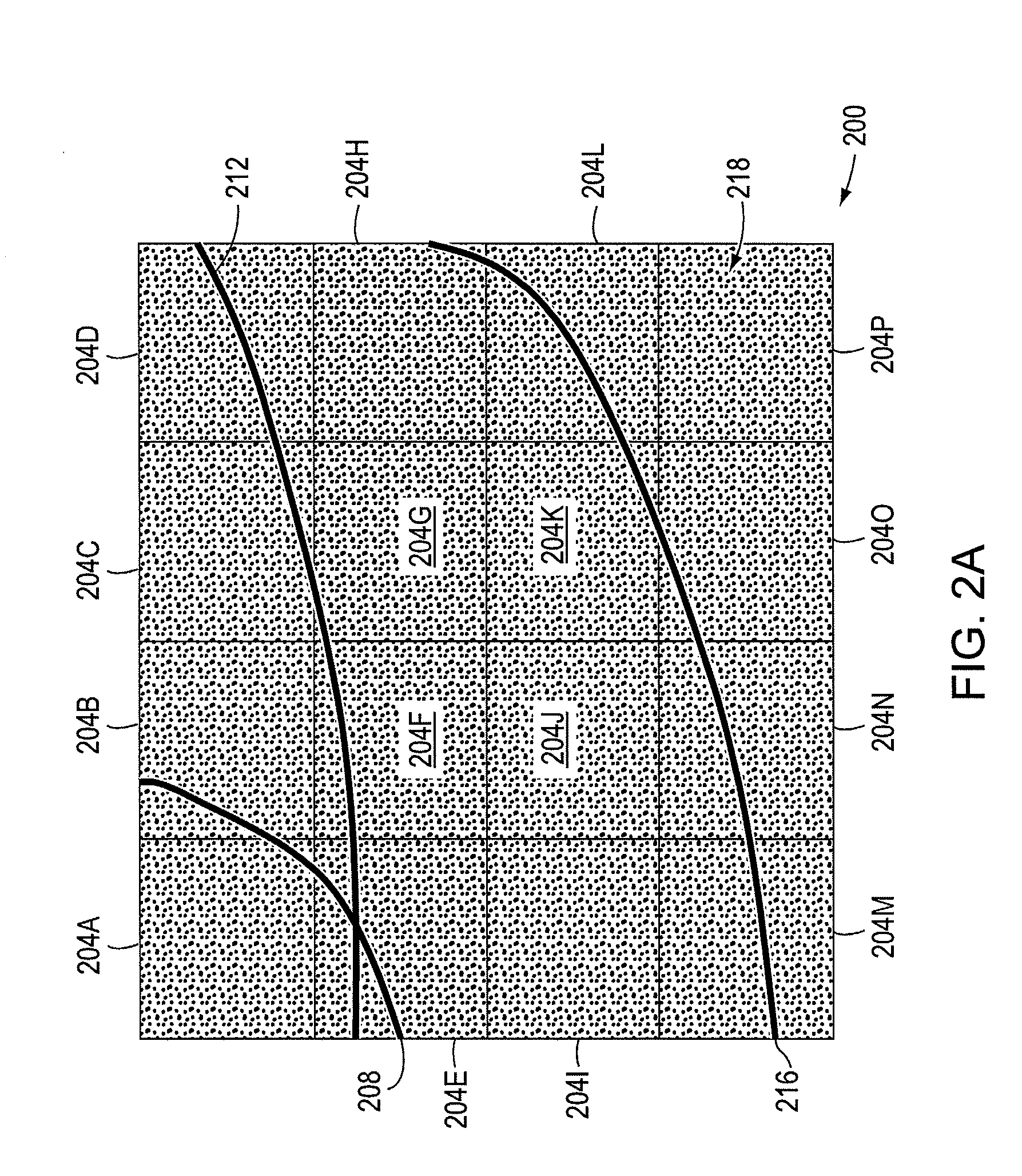Stabilized retinal imaging with adaptive optics
a retinal imaging and adaptive optics technology, applied in the field of optical imaging, can solve the problems of ao system, uncertainty about the location of the smaller field relative to global landmarks, and reasonable pupil centrifugation to be maintained, so as to improve our understanding of the mechanism of vision and confine damag
- Summary
- Abstract
- Description
- Claims
- Application Information
AI Technical Summary
Benefits of technology
Problems solved by technology
Method used
Image
Examples
Embodiment Construction
[0034]FIG. 1 shows an illustrative embodiment of a retinal imaging system 100 including three subsystems: a first module 104 for retinal tracking, a second module for imaging 116, and a third module with adaptive optics 120. The first module or retinal tracker 104 can stabilize to fixed and repeatable retinal coordinates and correct for the adverse effects of eye 112 motion. The retinal tracker 104 can include a wide-field line-scanning laser ophthalmoscope (T-LSLO, or TSLO). The second module or imaging apparatus 116 can be a flying-spot scanning laser ophthalmoscope 116, which can provide high-magnification confocal images. The third module or adaptive optics (AO) component 120 can sense wave-front distortion and correct for ocular aberrations.
[0035] Control of hardware and acquisition and processing of images and data from the sub-systems can be accomplished using a single software platform. The system, therefore, can present to the operator and / or clinician a wide-field view of...
PUM
 Login to View More
Login to View More Abstract
Description
Claims
Application Information
 Login to View More
Login to View More - R&D
- Intellectual Property
- Life Sciences
- Materials
- Tech Scout
- Unparalleled Data Quality
- Higher Quality Content
- 60% Fewer Hallucinations
Browse by: Latest US Patents, China's latest patents, Technical Efficacy Thesaurus, Application Domain, Technology Topic, Popular Technical Reports.
© 2025 PatSnap. All rights reserved.Legal|Privacy policy|Modern Slavery Act Transparency Statement|Sitemap|About US| Contact US: help@patsnap.com



